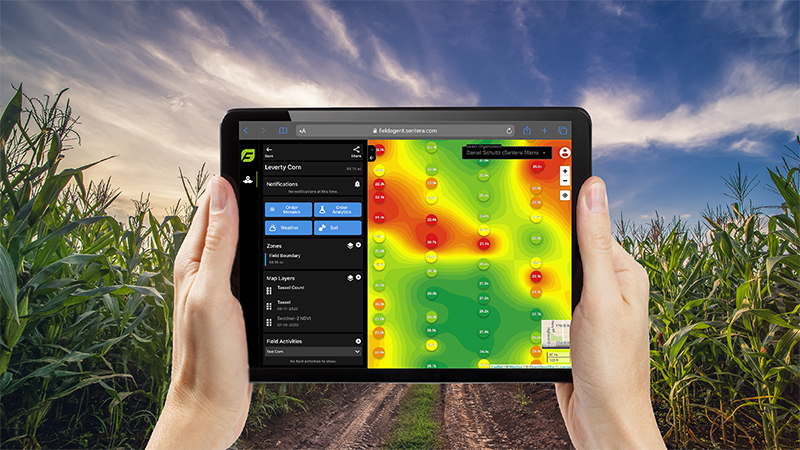Drift Breakthrough With Granules

As agriculture faces more scrutiny than ever — and growers strive to stretch every input dollar — one issue continues to rise to the top: spray drift. Three years ago a group of collaborators, funded in part by a $5 million grant from Ohio’s Third Frontier Program, began intense work to design a granule carrier to get pesticides and nutrients more efficiently to plants — and to engineer the application equipment to deliver it. The premise: Because of the ability to control their particle size, granules drift less than conventional liquid products.
Collaborators include powerhouse CropLife 100 dealer The Andersons, the OhioBioProducts Innovation Center (OBIC), Ohio State University’s Ohio Agriculture Research and Development Center (OARDC), Syngenta, PSB Co. and the National Lime and Stone Co.
The granules are being made at The Andersons’ laboratories in Maumee, OH, with evaluations underway in greenhouses and fields in Columbus and at the Wooster OARDC facility. Granules consist of 1) a bio-based material such as corn cob and tree lignosulfonate; 2) naturally occurring minerals; and 3) an active ingredient. So far, the three “indicator” herbicides in trials have been glyphosate, 2,4-D and dicamba.
Current focus is on foliar granules that are activated by water — either during the application or using existing moisture (dew) on the leaf surface — to create a phase-change, says Chuck Anderson, director of marketing and technical development at The Andersons. That touch of water is vital to delivery, to get the granules to stick to leaf surfaces, and to activate the materials.
Foaming granules are another work in progress. “Here, when water touches the granule an immediate ‘blossom’ of foam is created that covers a greater area than, say, a water droplet, due to the expanding nature of the foam,” he explains.
The commercial-level efficacy of this granule technology has already been proven with soil dispersing products released over the past 10 years by The Andersons for the turf market. The materials are applied to the soil with a dry spreader, then activated by irrigation or rainfall. In fact, in 2012 The Andersons are launching a dispersing humic acid called Humic DG.
Delivery Dynamics
In research, the foliar granules have been applied with almost entirely pneumatic technology, in this case, Valmar spreaders, but the team has also modified pneumatic equipment to aid the wetting process.
Equipment changes and evaluations are the job of Michael Sword, research engineer with The Ohio State University Department of Food, Agricultural and Biological Engineering (FABE). Finding and creating just the right granule size and water/granule ratio has been a challenge, but Sword says team has found that “sweet spot” with units able to produce granules measuring almost entirely 200 microns in diameter. At this size, leaf adhesion is high and drift is dramatically reduced.
He notes that in conventional liquid applications, the sheer weight of ever larger sprayers — loaded with the water needed to apply products — contributes to soil compaction. “We are going out with a lot less or no water,” he says.
At this point, the team is proving the foliar granule concept. They have used Valmar spreaders to cover plots with 6-foot-wide rows stretching 20 feet long. When the time comes time for granule commercialization — anticipated in 2014-15 — Anderson says they will have worked out the scalability. He believes equipment manufacturers such as Ag-Chem (Valmar’s parent company) and Case IH “will make good platforms to apply our future products for the high volume delivery needed by custom applicator operations.”
Anderson says one of the biggest surprises along the way has been that in two summer trials, granules performed better than the liquid formulation, which could be related to the high heat conditions at the time. And granule formulations are being applied as low as 20 pounds per acre.
“We think the two main reasons for adopting this new technology will be risk mitigation and convenience,” he says. “There is zero liquid drift as well as the traditional convenience of granules — easy spill containment, stable in storage and freezing conditions, no mixing, reduced volatility, and reduced worker exposure.”
Anderson expresses an urgency to mainstream this technology in light of the new GMO crops expected in the next few years: “Some of the active ingredients that the seed companies are working with are more inherently volatile than glyphosate. I think this gives granules an edge.”





